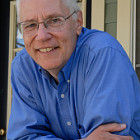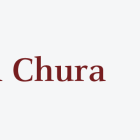
OP-ED: Prison is No Place to Grow Up: Why Every State Must Enact Juvenile Justice Reforms
|
Think of all the benefits we heap on our children, the advantages we say they all should have. Why does all that disappear when a kid gets arrested?
Juvenile Justice Information Exchange (https://jjie.org/author/david-chura/)

Think of all the benefits we heap on our children, the advantages we say they all should have. Why does all that disappear when a kid gets arrested?

Teenagers in adult prison live with an endless series of violations on a daily basis, violations that I could only think to describe as “everyday rapes.”

It’s an optimistic headline: “Prison Rape: Obama’s Program to Stop It”. It leads into a comprehensive New York Review of Books article on three recently released Federal government publications. Two of these documents examine sexual abuse in the nation’s detention centers while the other outlines the Department of Justice’s regulations for eliminating prison rape. All three aim to address the appalling number of people—young and old, female and male, citizen and those awaiting deportation— who routinely suffer sexual violence while in lockup, an estimated 209,000 plus every year according to the Justice Department. So where’s the optimism?

When most Americans hear the constitutional phrase “cruel and unusual punishment” they can tell you what it means. Hanging. Flogging. Chain gangs. But high on my list of “cruel and unusual punishment” is sentencing juvenile offenders to solitary confinement.

“You don’t care about the victims. All you care about are those kids.”
It was a comment I’ve heard in one form or another at book events, at juvenile justice talks I’ve given, or in response to pieces I’d written about our national policy of retribution towards troubled kids. I have to admit, though, this guy was a bit more, shall I say, challenging, as he stood up after my reading and made his comment. I’d read several advice articles for authors on giving readings suggesting you have “pat answers” ready for the Q & A. It keeps things moving. It may be good advice, but I’ve found it doesn’t work for me. Juvenile justice is too potent a topic be “pat answered” away.

Like most teachers I’ve gotten some praise from my high school students over my 26 years of teaching—a lesson “wasn’t bad,” or a particular class was “sorta interesting.” I’ve even been told that I was a “pretty good teacher.” High praise coming from teenagers. But the truth is I wasn’t a “good teacher.” I was a “failure,” at least according to America’s “education reformers”—that “odd coalition of corporate-friendly Democrats, right-wing Republicans, Tea Party governors, Wall Street executives, and major foundations” as Diane Ravitch aptly defines them—because the kids I taught consistently lagged behind their peers in every measure, performing well below grade level, failing state standardized tests. Given the present state of teacher evaluations, with a significant portion allotted to student performance on mandated tests, I’d be in big trouble if I hadn’t left teaching recently. I certainly wouldn’t get any bonus pay. If it were up to the Obama Administration I might not even have a job since I would be one of those teachers who, as the President noted in his 2012 State of the Union address, “just aren’t helping kids.” And if I still taught in New York I’d be facing the prospect of having my name and ratings published in newspapers and on the internet if the Legislature gets its way in what the New York State Union of Teachers called the “name/shame/blame game.”
But I know that I wasn’t a “failure,” and more importantly, that the hundreds of kids I’ve taught weren’t either.

Arizona’s Legislature recently passed a law charging prison visitors a onetime $25 fee as a way to help close the state’s $1.6 billion budget deficit. Middle Ground Prison Reform, a prison advocacy group, challenged the law in court as a discriminatory tax, but a county judge upheld its constitutionality. Fees like that, slapped on prisoners and their families, couldn’t be more counterintuitive. But then again, so many of our criminal justice policies are just that. Since it is mostly the poor, the desperately poor who fill U.S. prisons, the $25 fee is one more economic hardship offenders’ families have to struggle with.

If anyone doubts that the young people locked up in our jails are children they should spend some time in one of those prisons around holiday time. I did just that for the 10 years I taught high school students, some as young as 15, in an adult county jail, and every year it got tougher to deny the impact being locked up for the holidays had on these teens. Jail’s a pretty isolating place. That’s one of the ideas. But in lockup they watched a lot of TV — that great purveyor of culture — and so despite all that concrete and steel and lack of freedom the holidays still seeped in.

It was like a giant switchboard, the kind you see in 30s and 40s movies, a bevy of operators plugging in a crisscross of wires, taking calls, making connections, a cacophony of chatter. That image came to me recently as I walked into the lobby of the MassMutual Center in Springfield, Mass. The only difference was that the conversations filling the hall were about the same thing: girls and young women in the juvenile justice system. We were there — teachers, social workers, lawyers, mentors, youth workers, college students and professors — for the Through Her Eyes conference sponsored by the Center for Human Development, a regional social services agency. This annual gathering, now in its seventh year, came about when a number of professionals expressed concern over the increased number of at-risk young females in “the system,” and the need for “best practices” to help this growing population.